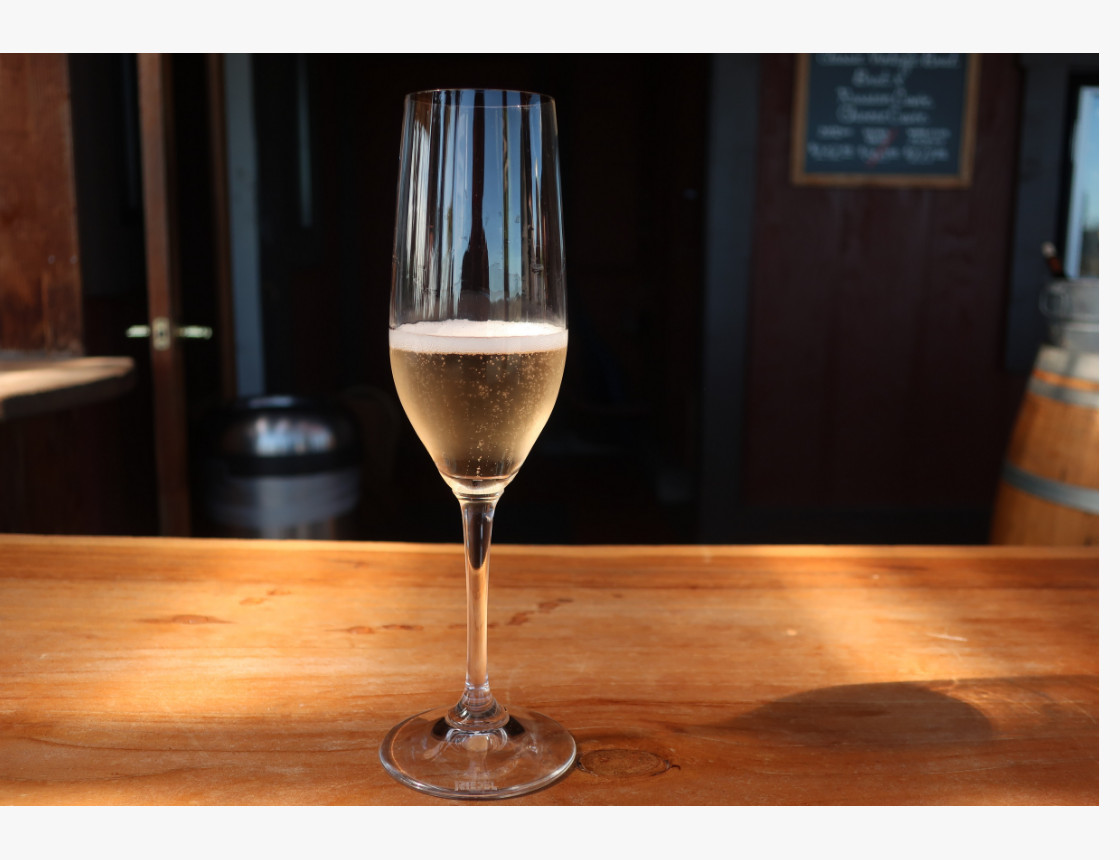


Extra Dry (aka Extra Sec) is a misnomer. Based on the Champagne scale, Extra Dry is “officially” sweet. Brut is the modern designation for dry Champagne. And, just to make things even more confusing, extremely dry is called Extra Brut and is the opposite of Extra Dry.
The Champagne spectrum (called “Sparkling Wine” when produced in the U.S.) runs from:
The confusion came when Champagne fashion evolved beginning in the 20th century to drier and drier tastes, so the French created a new classification to mean dry. Thus, the term Brut, which today is the most “classic” and pervasive.
Dosage trial at Iron Horse Vineyards
The degree of sweetness to dryness is determined by the dosage. Dosage (aka liqueur d’expédition or lex) is the finishing touch to a bottle of bubbles – a simple syrup of wine and sugar, and the last addition before inserting the cork. At its most basic, dosage determines the degree of sweetness to dryness of the wine.
Over the last two centuries, there has been a tendency to drink champagne with lower and lower dosage. In the 19th century, champagne was enjoyed very heavily sweetened, with residual sugar levels varying between 5 and 10% or even more.
Today, there very few “doux” and “demi-sec” Champagnes. And in my observation, French Brut bubblies generally have become drier in recent years. Two examples are Moët Imperial and Louis Roederer. Iron Horse Sparklings have also become drier and more nuanced compared to our early vintages.
One of my favorite drinking games… I mean, educational tastings, is to compare our Brut X, Classic Vintage Brut and Russian River Cuvée – three variations on the same base wine, each with a different dosage. We feel all three are of equal quality, making this a purely hedonistic experience. The point is to spotlight the influence of dosage.
Brut X with Iron Horse Saber
Brut X is the driest of our bubblies. Our first vintage was originally called Ultra Brut, a name I loved, until we received a very polite letter from the attorneys for the Laurent Perrier Champagne House asking us to cease and desist, since it is trademarked.
The X in Brut X stands for extremely dry, extremely bright, extremely expressive. Some vintages, are absolutely bone dry — i.e. no residual sugar — which was a learning for me. I thought Ultra or Extra Brut meant, by definition, no dosage, but we found that adding a few milliliters of Chardonnay and/or Pinot Noir gave the bubbly added refinement and polish.
Our Classic Vintage Brut is the standard bearer. It sits at the same table with the finest bubblies made anywhere in the world with the distinction of showcasing the gorgeous fruit flavors that are unmistakably California, Sonoma County, Russian River, Green Valley and most specifically Iron Horse.
Russian River Cuvee Served with Caviar
Russian River Cuvée is the richest of our bubblies, but still technically a Brut at 1.5% residual sugar. A favorite for many of our fans, this is great as an aperitif, with caviar or Asian flavors, and as the toasting wine. The White House has historically served Russian River Cuvée with dessert.
What about at the other end of the spectrum, what are the general characteristics of a high dosage wine? Extra Dry Champagnes definitely have richness and weight.
But regardless of the degree of sweetness to dryness of the wine, the key as always is balance. For us, balance equals beauty… in all things.
Finding that balance point in wine is generally achieved by trial and error… strictly by taste and most importantly tasting every conceivable combination and permutation. i.e., no recipe. We feel if you succumb to recipe winemaking you could be making very good wine but not necessarily the best wine.